From the ![]() Sweets Issue
Sweets Issue
From my first and only trip to Seville, I remember two things. One, the white-washed buildings and bright, wild oranges growing bountifully around the city; and two, becoming utterly lost in the snaking back roads in search of churros.
From the minute my flight confirmation arrived, I began reading and dreaming about these doughnuts. By definition, that term is typically a type of fried sweet dough, something that can be interpreted quite differently, but that makes appearances all over the world. These churros were mentioned in guide books, described in magazine articles, and pictured in travel pieces about the city. It seemed there was not a single piece published about Seville that failed to mention churros, and after a fair amount of research, I decided on the place I would seek to have them: Bar Comercio.
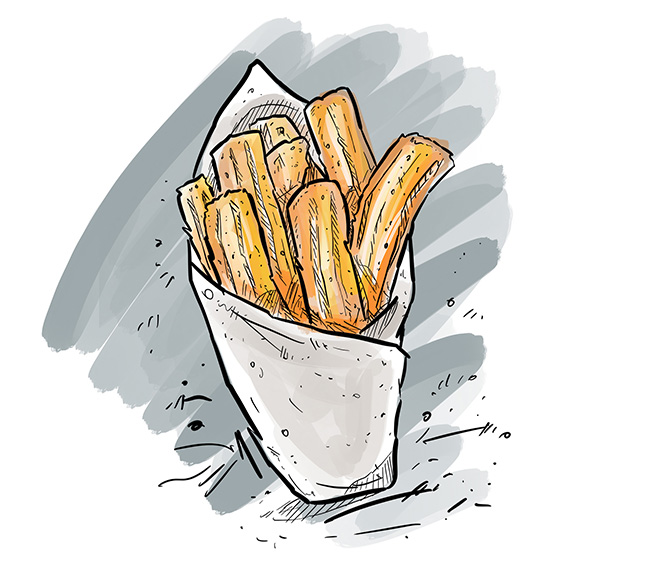
I set out early, but there was already a hive of activity when I arrived and squeezed onto the only empty barstool in the antique establishment. The churros con chocolate came quickly, and from the second they were placed in front of me, the fragrant, nutty aroma enveloped me. The miniature cup of dense rich chocolate teetered on the edge of the plate and I greedily broke a churro in half, dredging the broken end through the liquid chocolate and popping it straight into my mouth. I closed my eyes. I let it begin to melt before the paper-thin crunch gave way to the pillow soft insides.
This successful venture was not the beginning—nor would it be the end—of a passion for finding doughnuts in their home locales around the world. There are many doughnuts to discover or revisit—Pączkis in Poland, Fasnacht, a German version, and Zeppole, the fluffy and sweet Italian confection. So united is the world in this simple culinary tradition, all packaged in crave-able, fluffy fried dough, that it may be a lifelong pursuit to taste them all, but I have compiled here are a few options I’ve managed to secure so far.
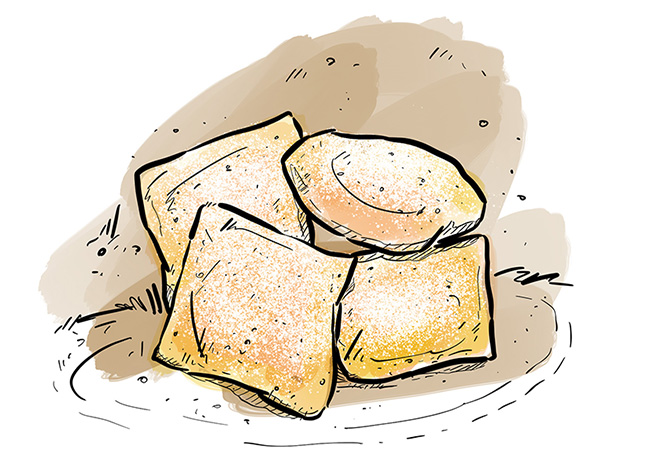
Beignets
Originally from France and now famous in New Orleans, there seems not to be a single soul who calls New Orleans home that can claim immunity to the billowy hot puffed pastries cranked out by the hundreds—or even the thousands—at Café Du Monde. This French doughnut was brought to the mouth of the Mississippi River in the mid-1700s when the exiled Acadians (who were originally French) made their way from Canada down to the southernmost point of the Mississippi River. The doughnuts came into common parlance in 1862 when Café Du Monde opened in the New Orleans French Market. Since then the shop has been open twenty-four hours a day, seven days a week, closing only for Christmas Day (or, in the unfortunate event of a hurricane). Café Du Monde has branched out with several locations around New Orleans, and a few other companies are now well-known for their beignets including Morning Call, a local favorite.
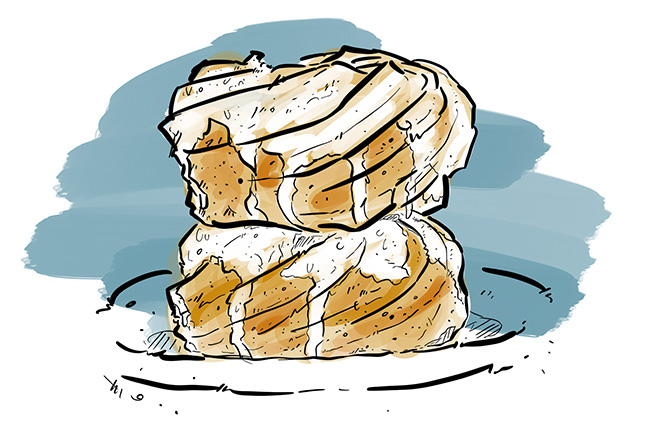
French Crullers
Roughly speaking, crullers are pâte à choux, the same pastry into which éclairs are baked, piped into a ring using a large star-tip icing bag, and fried. The star tip creates caverns in the dough that, when fried and dipped in a sweet glaze, hold the icing and create crunchy stripes through the doughnut. Though French in origin, their fame exploded when they were added to the offerings at Dunkin’ Donuts franchises around the U.S. in the mid 1950s. When some of those same locations later removed French crullers from their menus, Facebook groups, web chats and magazine features emerged, coordinated by a surprise cult following and all part of a campaign to bring them back. Today, you can again find these crisp ringers back on the shelves at many of those popular franchises, proving popularity far beyond their French origins.
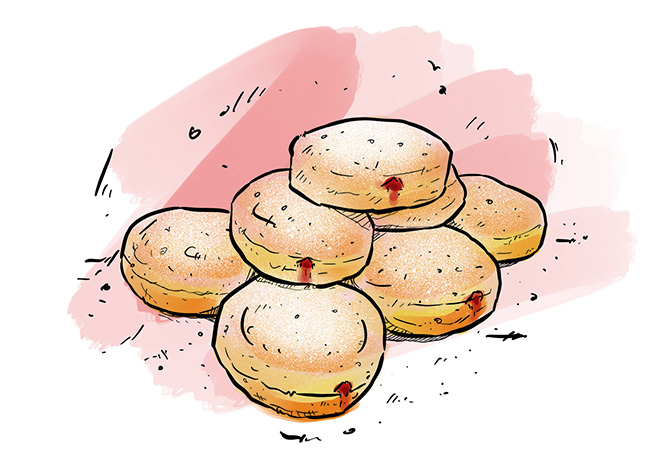
Berliners
Berliner doughnuts, the sweet German specialty, are most similar to American jelly or jam doughnuts. Made without a central hole, they are a yeasty dough allowed to rise, cut into circles and lightly fried. They are then filled with jam or cream and finally dusted with confectioners sugar. Traditionally, you would only find vanilla custard, raspberry, strawberry or apricot jam filling, but today there are more than a few modern doughnuts around the world that edit the tried-and-true recipe. A Berliner-esque doughnut could be piled high or filled with exotic ingredients, sold to ravenous millennials who make extra room for them in their Instagram feeds. For purists, however, classic Berliners are still a popular culinary confection. They can also be found under other names: Krapfen in Bavaria, Austria, and Northern Italy; Kreppel in Hessen; Fastnachtsküchle in Rheinland-Pfalz and Switzerland; and Fasnetskiachla in Swabia. If you want to go to the source, some of the best Berliners can be found at two of the oldest bakeries in Berlin: Bäckerei Walf or Bäckerei Siebert, but fair warning, you may have to practice saying Pfannkuchen.
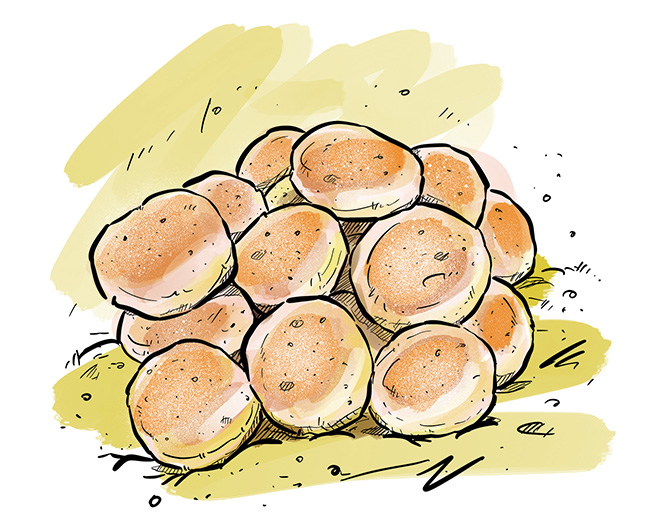
Malasada
Though I had the good fortune of being married in Hawaii, we spent so much time in search of the perfect poke that we never did discover the malasada during our time there. In fact, I had no idea the doughnut existed until well after our first anniversary. Of Portuguese origin and most likely from the Madeira Islands, a malasada is a deep fried, caster-sugar coated ball of yeasty dough. They can sometimes be found with filling, with a popular options like guava or coconut as a nod to their tropical surroundings. In Hawaii, a challenge is laid before doughnut lovers—to find their favorite version of the imported confection. Leonard’s Bakery, located in Oahu, has been producing the treats for more than fifty years, and claims to be “Hawaii’s original malasada bakery.”





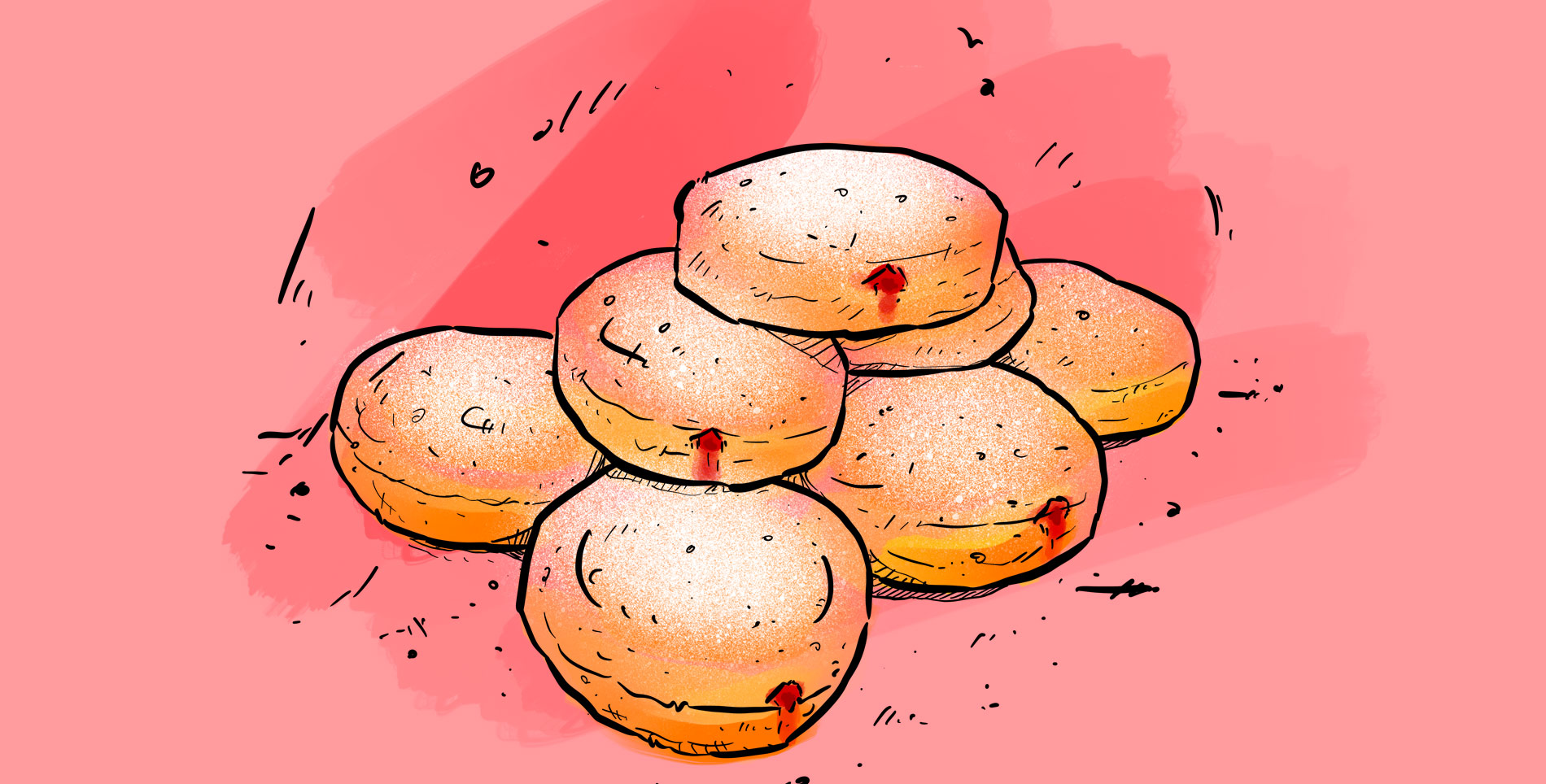

Our comments section is for members only.
Join today to gain exclusive access.